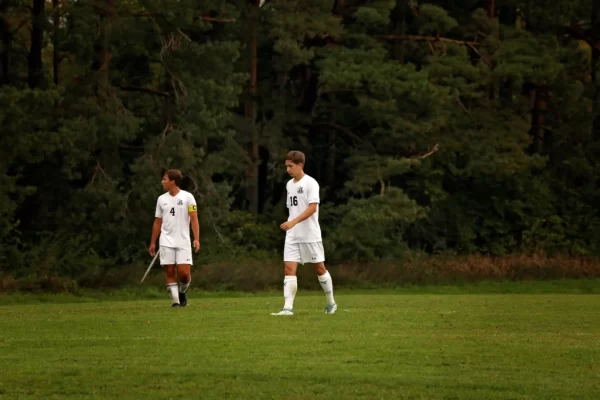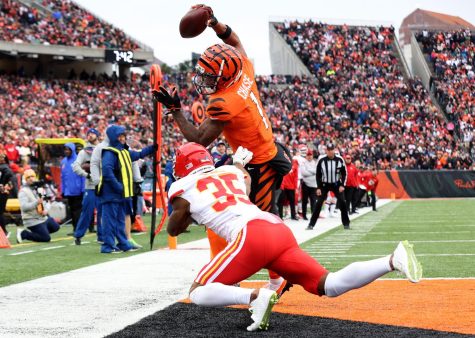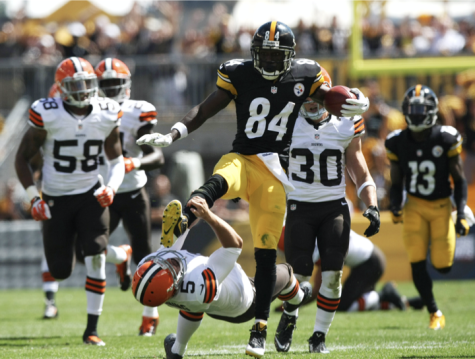The Dangers of Snow Sports
March 13, 2020
In 2013 during the Alpine World Championship, Lindsey Vonn experienced a career-changing ski injury in front of thousands of spectators. She started her run very well,speeding down the slope with expert ability and skill.However, one jump in this Alpine World Championship ended her ski season in mere seconds. She landed off balance and tumbled forwards at extremely fast speeds, her ski flying off and her boot releasing from her binding. Her cries of help due to the sheer amount of pain the incident caused her can be heard from the footage. She slowly slid down the mountain, unable to get up from her unknown injuries, still screaming in pain. Paramedics rushed toward her as she laid still, motionless, and unable to move. Soon, she was rushed to the hospital via helicopter where news broke that she tore her anterior cruciate ligament (ACL), medial collateral ligament (MCL) in her right knee, and suffered from a fracture of the Tibia. Even after this devastating crash, she was determined to return to the slopes, yet she sustained one more injury between this initial accident in 2013 and when she returned to competitive skiing in 2018. In December of 2013, she injured her right yet again while skiing in France, though it was only a sprain of the MCL.
So, how likely is it for someone who isn’t an Olympic level skier or snowboarder to be injured? From a 2018 report by the National Ski Area Association (NSAA), between 2017 and 2018 37 fatalities occurred out of a reported 53.3 million skiers/snowboarders reported out on the slopes for the season. It is very easy for someone to overestimate abilities going down the mountain, this is why it is so important to pay attention to trails to notice if they are icy, un-skiable, or outside of one’s skill range. Seventy four percent of these injuries were suffered by men, the other twenty six in women. Among these, the most common injuries reported were wrist related. When going down the slopes, snowboarders are more likely to get injured than a skier, and snowboarders are three to four times more likely to have to go to the emergency room or hospital because of their injuries (making them the motorcyclists of the mountain). Other differences between the two include the fact that skiers are more likely to sustain knee injuries, while snowboarders tend to hurt their upper body (ie. wrists, arms,or collarbones). Most of the time it is a person’s own fault for their injury–considering only about 3%-8% of crashes happening between other riders on the mountain. In reality, about 75% of people are hurt due to a loss of control when speeding down the mountain or trying a difficult jump. This is why it is so important for the average person to accurately assess their skill and ability level.
Statistics of injuries such as these actually have come to affect participation in snowboarding and skiing. A 2014 report stated that only 8 million alpine (or downhill skiers) were reported, while the previous year 11 million downhill skiers were seen. There has been a move to more trick skiing (or freeskiing) in the past few years, meaning that people have more of an interest in going to a trick or terrain park rather than speeding down a green, blue, or black trail. Of course,this change might be due to the fact that the newest generation of skiers seems to be most interested in freeskiing, as 70% of freeskiers are under the age of 34. There has been an increased number of snowboarders in the past year which would support the trend that the younger generation tends to enjoy a more extreme and stylistic approach of going through a trick park or down a mountain. The trend toward more extreme winter sports as well as risks of injury may explain the decrease in attendance at the more traditional ski mountains.
There are many considerable ways to protect yourself when going skiing or snowboarding. Primarily, always wear your helmet. It is extremely easy to land on your head if you fall and don’t know the correct way to land. Using helmets can prevent many injuries that have many effects, including concussions. Second, it is important to learn how to fall correctly. Naturally, a person would want to put their hands out to break their fall, but this can result in the wrist, arm, and shoulder being fractured, broken or displaced. Third, make sure your equipment is working and not broken. Going out with a cracked board or ski could result in a total break of the board or ski meaning not only will one’s equipment be unusable, but it can result in an injury on the owner’s behalf if it breaks while going down the mountain. Fourth, remember to warm-up before going down the most difficult or unknown trails. It’s extremely easy to try and get ahead of oneself and start on the most difficult trails, but it is best to go down an easier trail to get a sense of what the conditions are and how icy it could be.Lastly,,be honest with yourself when it comes to knowing your level and ability. Even if you have been on blacks or double black diamonds, it is extremely important to recognize that some days on the slope may be better than others, and that these levels can vary from mountain to mountain.This recognition is especially important if one is feeling fatigued or injured. These five precautions seek to assure the safest and most fun skiing or snowboarding experience.









